Although the Los Angeles Times Times originally reported Nipsey Hussle was at the center of a Los Angeles Police Department investigation, the LAPD is reportedly denying those reports.
TMZ says Neighborhood Nip was “not going to be prosecuted for any type of gang activity at the time of his death.” The LAPD was simply attempting to curb gang activity around the area of Crenshaw and Slauson, where Nip’s Marathon Clothing store was located.
Sources close to the LAPD and Los Angeles City Attorney say they were never targeting Nipsey. However, no one from either agency could explain why Nipsey’s name was initially mentioned.
[This article has been updated. The following was published on July 16, 2019.]
Nipsey Hussle’s tragic shooting death in March undoubtedly left a huge hole in not only the rap community but also the Los Angeles community. But according to a new Los Angeles Times article, the slain MC was still the subject of a LAPD investigation at the time of his death.
Officials in the Police Department and city attorney’s office were reportedly looking into his alleged gang affiliations. They were investigating Nipsey, his property and business associates in an effort to determine if the strip mall at the corner of Crenshaw Boulevard and Slauson Avenue was a gang activity hub.
That same intersection was the location of Nip’s Marathon Clothing store and sadly, the very spot his life was taken on March 31.
The LAPD’s investigation will continue in the wake of Nip’s passing, meaning there’s a possibility authorities could take action against his business partners.
Although the city pressured Nip’s former landlords to evict the Grammy Award-nominated rapper and his associates as part of the investigation, the landlords instead sold the property to Hussle and a group of investors for $2.5 million earlier this year.
Despite his Rollin ’60s Crips affiliations, Nipsey rightfully earned the nickname “Neighborhood Nip.” Before his murder, he was working with the city to reduce gang violence.
The 33-year-old intended to build new apartments, which was considered an “important investment” in the neighborhood in the face of gentrification. He often offered gang affiliates jobs and tried to help former inmates who had served prison time for gang-related crimes.

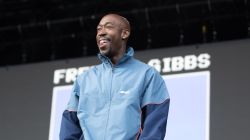
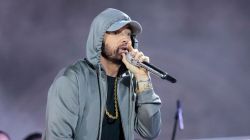

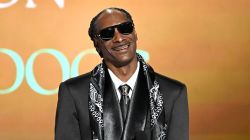

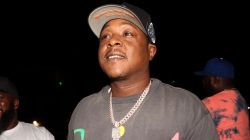

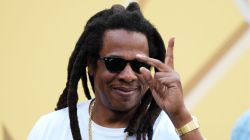



It’s kind of dumb to say that he earned the nickname “Neighborhood Nip” DESPITE his Rollin’ ’60s Crip affiliation. The full name of the set is Rollin’ ’60s Neighborhood Crips, so it’s reasonable to assume that he earned that nickname because of his affiliation.
common sense.
12 can eat a Dilznick….let the man Rest In Peace!
We all know he was involved in criminal activity, what’s shocking is the severe lack of role models in the black community that a known gangster was deified upon a death due to the very lifestyle that he and he his cohorts celebrated and popularized.
Here comes the white devil trying to discredit an empire a black king built with his blood sweat and tears.
How do you know white people were involved? I see black cops, Asian cops, Hispanic cops all over LA, but your uneducated ass automatically thinks the white man has a vendetta against a dead Crip. You’re a racist dipshit.
is that like a religious thing? black king?
Man Fuck the PIG’s they the real gang members in the streets. Killing innocent people, striping families apart and always lying for each other. Getting away with real crime on tv or in your face. ALL BROWN PEPOLE NEED TO UNITE AND FIGHT BLUE AND WHITE. Real Talk.
Brown pepole? Boy, you’re an idiot. You can’t even spell “people” right. I see you think Nipsey was some sort of saint. He wasn’t, obviously. When you people ( that’s how you spell it, Einstein) stop idolizing thugs, that’s when the black man can live to his fullest potential. Right now all this talk about “we kings and queens” is sad and pathetic. This brown person wants nothing to do with your stupidity and bias against police officers. Walk in their shoes and deal with the low lives they deal with everyday. You wouldn’t last an hour, punk.
If 20 black people get killed, 19,5 times it’s another black person who does it. Might wanna address that situation first before you start crying like a little bitch over the other 0.5. FACTS
If more than 20 people get shot most of the time it’s a white person deemed mentally unstable.
Real talk! Or they’ll have a positive mugshot of the killer making them seem like an everyday good dude…
Gang members dont get shot
You people are crazy!
I knew it would come out after the fact that the LAPD wanted him taken out. They were investigating him AND him Landlords sold his shit out from under his feet???? YA multiple people wanted him out. LAPD used “shitty cuz” to reduce his sentence by taking out NIP so they could get what they wanted.
LAPD responsible for NIPS death. How can yall not see the writing on the wall??? They couldnt get close to nip so they used Eric to get close for them. PIGS
Brown People? What the literal fuck. I am white as fuck but I even think these PIGS killed nip. How ignorant can you be. ALL OF US ARE BEING OPPRESSED IN 2019. Fuck the slave talk…. they racism lies in government and in the police force. It isnt 1920 retard fuck……… Police brutality and corruption happens everywhere and to everyone. FUCK anyone here who is still racially fucking ignorant in 2019.
Um…bc he created a strong legacy so early, hence why the “man” had him killed…Young black leaders will always be targeted to prevent the elevation of the black community. Yes, most of the times we kill each other due to senselessness, but young black leaders…with whom want to raise their own to the top??? Do the math. We need to wake up and do something.